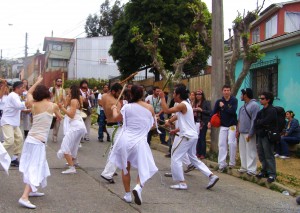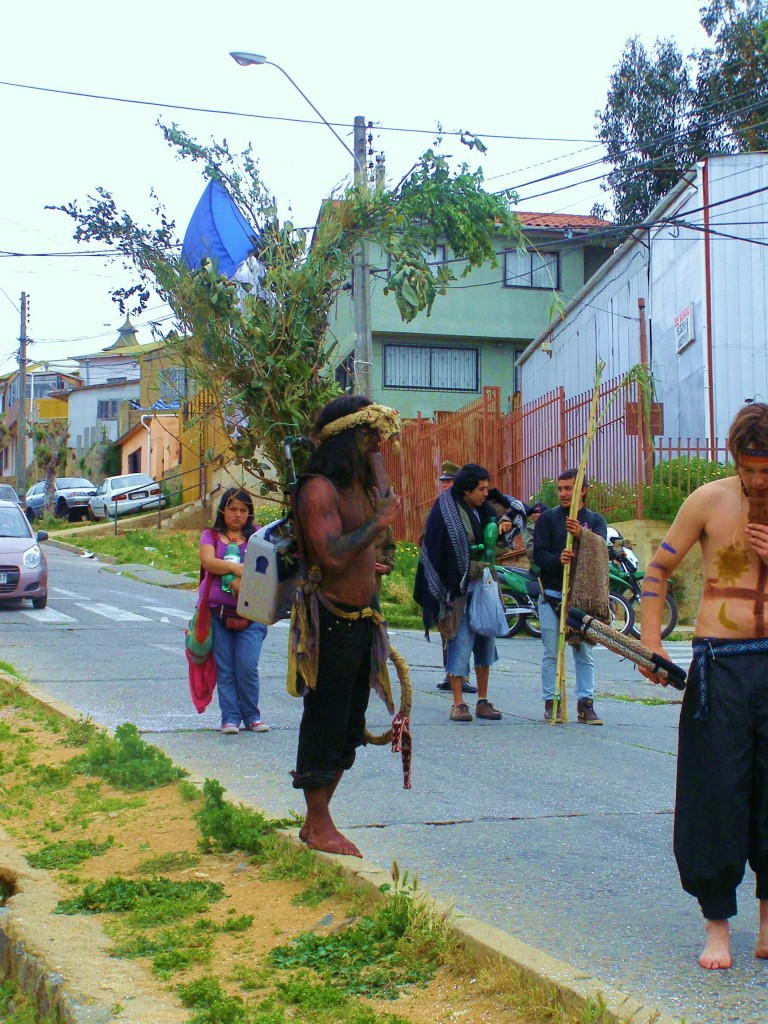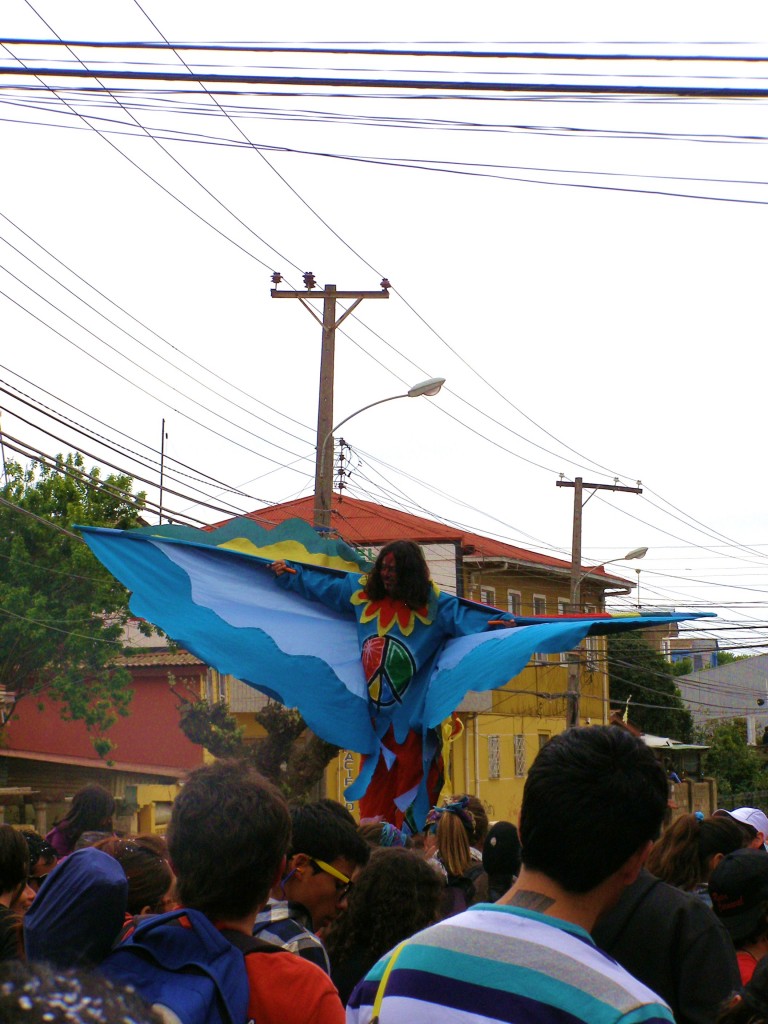
Vibrantly painted bodies. Rows upon rows of samba drummers. Confetti in the air. Children on stilts. A spectacular crowd dancing and winding their way through the hills from Plaza San Luis on Cerro Alegre. This is Mil Tambores (a thousand drums), an annual festival in Valparaiso, Chile.
Residents of Valparaiso and visitors from all over celebrate Mil Tambores all weekend long, beginning with “Cuerpos Pintados” (body painting) and a massive parade through the hills on Friday afternoon, and ending Sunday with another wild parade, with a number of lectures, concerts, etc. in between.
I was thrown into the fray by choice on Friday afternoon, having next to no idea where I was going to meet a group of friends since I was running late from a group project in a local elementary school on the other side of the city. The only directions I was going off were “we don’t really know how we got here, just take a taxi near the bar we were at last week and hopefully we’ll find each other in the crowd.”
Yet as things usually have worked out so far, it ended up being a piece of cake to get there (granted, text messaging eased the process). Just when I started to feel confused, I ended up meeting a couple of Chilean girls with bongo drums and colorful apparel who were headed to the same plaza, and we made our way to the beginning of the festivities together.
It’s hard to describe the level of bizarreness that occurs at this carnival. Basically, anything goes. Whether it’s an almost completely unclothed girl with her body painted so painstakingly she looks like live graffiti, or a dancing man passing around his bottle of rum while shouting “for the cold!”, people let it all out at Mil Tambores. There was some police control, but overall I had the impression that this giant party has few guidelines, other than the organization of the dancers and drummers. However, there was an important theme—this year, “Madre de la Tierra” (mother earth), represented most evidently by a group of tree branch clad and wild-haired men.

Amidst the performers in the middle of a lively parade, my friends and I danced and conversed our way throughout the hills of Valparaiso for a few hours, eventually ending up at a phenomenal vegetarian restaurant with extremely tired feet. And that was only Friday evening!
Sunday I returned to the spectacle on a mission to record a few videos for a course on the history, cinema, and literature of Valparaiso. This time I felt like more of an observer than a participant, and it was fascinating to play both roles in the same festival.
Yet again, getting there was an adventure in itself. Luckily this time I had a Chilean friend with me to help me navigate the mountainous streets of a completely different part of the city I’d never been to before. As we turned a corner at the top of a huge hill, we hear the drums beating and voices chanting and knew we’d finally arrived.
I enjoyed getting swept into the crowd for a while, having confetti sprinkled on my head, watching men on unicycles juggling, women dancing in a circle beating sticks together, and a myriad of other performances. Capoeira, a Brazilian art form combining dance and martial arts, drew a large crowd. Two men (and sometimes a man and a woman) participated, and it involved sort of a fake karate fight; those who do it well are extraordinarily graceful with their kicks, blows and evasive maneuvers.
Recollecting the sites of the weekend, I must say I’ve never seen anything so strange before in my life. Mil Tambores isn’t the sort of festival one can even begin to classify. However, in a sense the wild parades represent the energy of Chilean youth I’ve encountered so far in my time abroad here in Chile. This energy is intellectual, artistic, liberal, indigenous, environmentalist and the list goes on. What liveliness! What social movement!

